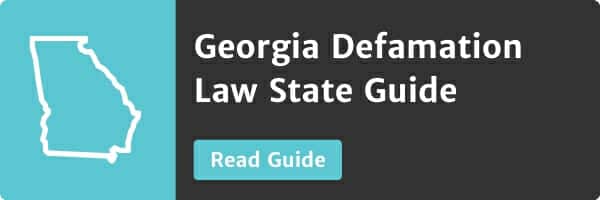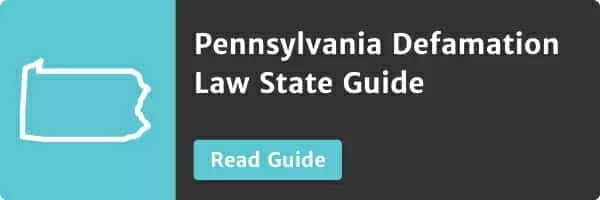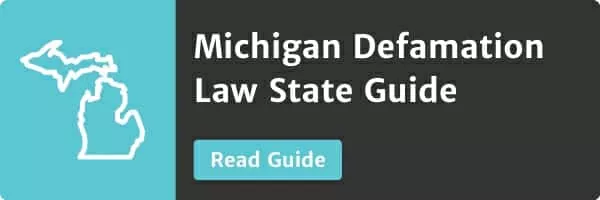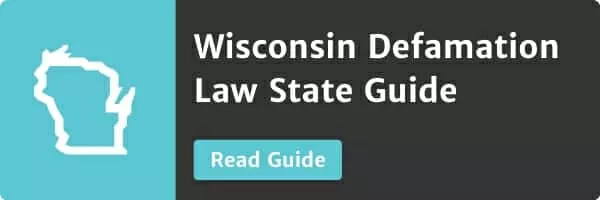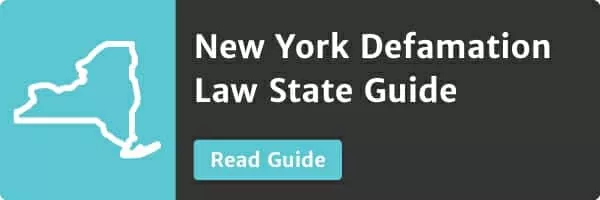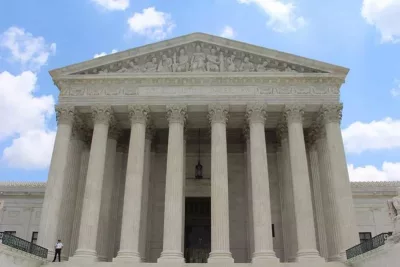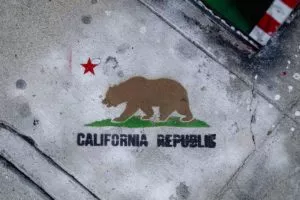
- Originally Published on March 16, 2022
The Complete Guide to California Defamation Law
California defamation law defines defamation of character as the publishing of a false statement to a third party that results in harm to another person’s reputation and good standing. The heart of a valid California defamation claim hinges on whether the published statement caused damage to another’s reputation.
The Golden State is a hotbed for high-profile defamation lawsuits, as many California residents find themselves at the center of media coverage, given the state’s popularity with celebrities and public figures. For this reason, California’s defamation laws are full of extensive legal precedent and often a guiding source for other defamation cases across the country.
At Minc Law, we have represented victims of defamation in 5 countries and 26 states, including California. Our experience representing over 2,500 clients has made us intimately familiar with California’s defamation statutes, defenses, and case law.
In this guide to California defamation law, we will review California’s definition of libel, slander, and defamation. We will also discuss how to prove the elements of defamation in California, with examples from actual cases. Then, we will cover common defenses to California defamation claims.
Differences Between Defamation, Libel, & Slander Under California Law?
Defamation, also referred to as ‘defamation of character’, is the umbrella term for the publication of a false statement that damages another person or entity’s reputation. Defamation is considered an umbrella term because it encompasses two different types of defamation: libel and slander. Defamation that is written or published in a tangible medium is considered libel, while defamation expressed orally is slander.
To remember the difference between libel and slander, keep in mind that both spoken and slander start with the letter ‘S’.
What is Defined as Defamation Under California Law & What Are Some Examples?
In Mattel, Inc. v. Luce, the California Court of Appeals defined defamation as a statement “which exposes any person to hatred, contempt, ridicule or obloquy, or which causes him to be shunned or avoided, or which has a tendency to injure him in his occupation.” Mattel, Inc. v. Luce, No. B143260, 2001 WL 1589175, at *8 (Cal. Ct. App. Dec. 13, 2001), as modified (Jan. 8, 2002) (quoting Cal. Civ. Code § 45).
A California case that illustrates this standard of defamation in action is Del Junco v. Hufnagel. In Del Junco, the defendant falsely alleged that the plaintiff lacked the requisite medical training to perform surgery. In the court’s eyes, this was enough to constitute not only defamation but defamation per se.
What is Defined as Defamation Per Se Under California Law & What Are Some Examples?
Defamation per se (commonly referred to as libel per se or slander per se) occurs when a statement is so inherently damaging to one’s reputation, that the plaintiff need not prove that they suffered actual damages as a result of the statement.
In California, statements that “tend to expose the plaintiff to public hatred, contempt, ridicule, aversion, or disgrace, and to induce an evil opinion of him in the minds of right-thinking persons and deprive him of their friendly intercourse or society” may be considered defamation per se.
Most states typically consider only four types of statements as defamatory per se. Yet, California considers nine types of statements so inherently defamatory that a plaintiff need not prove damages and damages will be presumed (presumed damages).
The nine types of statements California has ruled to be defamatory per se include:
- Statements charging a plaintiff with a crime (or having been indicted, convicted, or punished for a crime).
- Statements that label a plaintiff, “communist.”
- Statements that a plaintiff has an infectious, contagious, or loathsome disease.
- Statements that subject a person to public hatred, ridicule, or contempt.
- Statements that a plaintiff is impotent or unchaste.
- Statements that injure a plaintiff in their office, profession, trade, or business.
- Statements charging a plaintiff with a violation of the confidence reposed in him.
- Statements that tend to cause a person to be avoided or shunned.
- Statements charging a plaintiff with treachery against his associates.
California has an extensive history of defamation cases, which provide illuminating examples of each type of defamation per se. For instance, in Albertini v. Schaefer, California courts found that a statement that an attorney was “a crook” was considered defamatory per se as it injured the plaintiff in the course of their profession.
In another expository case, Montandon v. Triangle Publication, the California Court of Appeals found that a statement referring to a woman as a “call-girl” was sufficient to constitute defamation per se.
What is Defined as Defamation Per Quod in California Law and What Are Some Examples?
Unlike defamation per se, the legal doctrine of defamation per quod requires plaintiffs to prove damages as a result of the alleged defamatory statement. This is typically proven through the production of extrinsic evidence. Simply put, “the injurious character or effect [of the statement] [must] be established by…proof.” Slaughter v. Friedman, 32 Cal. 3d 149, 154 (Cal. 1982).
In Slaughter, the alleged defamation did not fall into any of California’s nine defamation per se “categories.” Rather, the plaintiff alleged that he was harmed by the defendant’s statements that the dental work he performed was “unnecessary” and that he was “overcharging.” While the statements pertained to Slaughter’s profession, they did not rise to the level of defamation per se.
However, the court found that Slaughter effectively pleaded defamation per quod because he also described damages and financial losses as a result of the defendant’s defamatory statement. Specifically, Slaughter was able to prove that Friedman’s statements interfered with his “economic relations with his patients,” because several patients refused to pay for their services as a result of the defamation.
Is Defamation Illegal in California? California Criminal Defamation Law
Twenty-three U.S. states and two territories have criminal defamation laws on their books. This means that some forms of defamation could result in criminal fines or punishment including prison.
California, though, is not one of the U.S. states with criminal defamation laws. While California defamation defendants do not face potential imprisonment, they could be subject to civil lawsuits and hefty damages (including punitive damages), depending on the nature and harm caused by their false statements.
Elements of a California Defamation Case
The elements of a legal claim are the building blocks of a well-pleaded defamation case. And it is essential to plead each element thoroughly to prevent the unwanted dismissal (or delay) of your claim. Below, we examine the elements of defamation in more detail.
What Are the Elements of a Defamation Claim in California?
To effectively plead a defamation claim in California, a plaintiff must prove the following four elements:
- There was a false statement of fact;
- Which was published without privilege to a third party;
- With fault of at least negligence on the part of the defendant; and
- The statement was either defamatory per se or caused special damages to the plaintiff (defamatory per quod).
A False Statement of Fact
Put simply, a defamation plaintiff must show that the statement communicated or published about them was in fact, false. A defamatory statement cannot be an opinion, an overgeneralization, or substantially true (commonly referred to as the substantial truth doctrine). Remember, falsity is at the heart of proving defamation.
Published Without Privilege
The statement must have been verbally communicated or published in writing to at least one third-party, other than the plaintiff or defendant. The statement also cannot be protected by privilege (an individual’s legal right to do or say something), such as a communication uttered during judicial or legislative proceedings.
To learn more about privileged statements, review the section below entitled, “Defenses to Defamation in California.”
With at Least Negligence
The defendant must have either intentionally lied when they made the defamatory statement, or they acted with negligence in determining whether their statement was true or false.
The Statement Was Either Defamatory Per Se or Caused Special Damages
The plaintiff must show that the false statement was so inherently defamatory that it falls into one of California’s nine types of defamation per se or prove that they experienced damages to their reputation as a result of the statement.
How Can You Make Sure That Your Defamation Case Has All of the Elements Necessary to Get It Through California Courts?
Before filing a defamation complaint with the appropriate court, write down each of the four elements of a California defamation claim. Then, write down how you will prove each element.
For instance, if a defamer implies that you do not have the requisite education to perform your job, you might be able to provide proof of your education. This will help you establish the falsity of the defendant’s statement.
What Else Should You Be Aware of When It Comes to the Elements of a Defamation Claim in California?
It is important to note that California courts require a plaintiff to plead the exact words used in the defamatory statement in the complaint.
This is a special pleading standard in California that is not always necessary in other states. So it is important that plaintiffs repeat the actual language used in the defamatory standard when filing a libel or slander lawsuit in California.
Minc Law provides a full range of services to help businesses of all sizes and individuals from all walks of life control their online reputation and image.Damaged reputation?
Defenses to Defamation in California
Before filing a defamation lawsuit in California, it is important to understand the potential defenses to defamation claims a defendant might have. Familiarizing yourself with potential defenses before filing your lawsuit can strengthen your claim and increase your chances of success in the long run.
What Are the Most Common Defenses to a Defamation Claim in California?
The most common defenses to defamation lawsuits in California are:
- Truth,
- Opinion,
- Consent,
- Privilege,
- Statute of limitations,
- Statutory defenses to defamation claims.
Truth as a Defense to Defamation
Because falsity is one of the key elements of defamation, truth is an absolute defense. If a defendant can establish that their statement was at least substantially true, they may prevail.
The Opinion Defense
If a statement cannot be proven as either true or false, it may be an opinion – which is a common defense to defamation lawsuits.
Keep in mind that statements containing both fact and opinion may be actionable for defamation where the facts at hand are false.
Consent as a Defense
If the plaintiff consented to the publication of the statement at hand, they will not likely succeed in a defamation lawsuit. Common forms of consent include: express, informed, implied, and unanimous.
Privilege
Some statements are considered privileged, which means the defendant can claim privilege as a defense. California recognizes four types of privilege:
- Absolute,
- Qualified,
- Fair report, and
- Neutral report.
Statute of Limitations
As with any type of lawsuit, a plaintiff must file their defamation lawsuit within California’s defamation statute of limitations, otherwise, the case can be dismissed.
Video: What is the Statute of Limitations for Defamation in the U.S.?

To learn more about California’s statute of limitations specifically, review the section below explaining the statute of limitations deadline.
Statutory Defenses
Like many states, California has Anti-SLAPP laws codified in their books. SLAPP is an acronym for “Strategic Lawsuits Against Public Participation,” and refers to a frivolous lawsuit filed by a plaintiff that is designed to intimidate or censor a defendant. California Anti-SLAPP legislation provides courts a way to quickly dismiss defamation lawsuits that lack merit and are filed in bad faith.
To prevail on an Anti-SLAPP defense, a California court must find:
- The defendant was acting in furtherance of their right of petition or free speech in connection with a public issue, and
- The plaintiff failed to show any probability that they would prevail on their defamation claim.
What is the Difference Between Absolute Privilege & Qualified Privilege in California?
By definition, absolute privilege refers to an unqualified right to do or say something. This includes statements that are considered defamatory. In California, absolute privilege is only applicable to three types of statements – those communicated or published in:
- Legislative proceedings,
- Judicial proceedings, or by
- Public officials in the course of their duties.
Qualified privilege (commonly referred to as conditional privilege), on the other hand, will apply when the speaker has a moral, legal, or ethical duty to communicate the statement and the audience has a reciprocal interest in hearing the said statement. For instance, journalists may have qualified privilege to make statements on matters of public interest and importance that their audience wants to know about.
The important distinction is that qualified privilege can apply in a range of situations, far beyond the realm of legislative, judicial, and public proceedings. Furthermore, unlike absolute privilege, qualified privilege does not typically immunize persons who communicate or publish a statement with actual malice or reckless disregard.
What Else Should You Be Aware Of When It Comes to Defenses to a Defamation Claim in California?
While the following considerations may not fall under the category of “defenses,” they are important to know when pleading a defamation claim.
The Streisand Effect, for instance, is not a defense, but a term coined to describe the negative (and viral) repercussions that can arise out of an attempt to censor a defendant.
Avoiding the Streisand Effect
The Streisand Effect is a social phenomenon that occurs when a plaintiff attempts to censor content published by a defendant and it backfires, drawing even more attention to the unwanted content. When it comes to defamation, this often occurs when a poorly worded defamation cease and desist letter or legal complaint is published online – garnering the attention of more people than the original content.
All prospective defamation plaintiffs should understand this phenomenon and how to avoid it because it can cause more reputational damage than the defamatory statement itself.
Video: What is the Streisand Effect & How Can I Avoid It?

Difference Between Public & Private Figures in California
When filing a defamation lawsuit, public figures (persons of established prominence in the community or media) must plead a higher standard of intent on behalf of the defendant.
In other words, a public figure must show that a defamatory statement was communicated or published with actual malice, not mere negligence.
But, who, exactly, is considered a public figure?
Public figures are anyone who has thrust themselves into the spotlight in any capacity. Think celebrities, media personalities, politicians, and even certain business owners.
Courts have held that public figures invite a higher degree of public scrutiny than private persons – warranting a higher standard for defamation. In California, courts consider whether a plaintiff is one of four types of person:
- A private person,
- A public official,
- An all-purpose public figure, or
- A limited-purpose public figure.
Public officials are those plaintiffs who have, or currently appear to the public in the arena of government affairs. All-purpose public figures are individuals in “positions of pervasive power and influence” who invite “attention and comment” on all of their matters, public and private.
And, limited-purpose public figures are plaintiffs who “thrust themselves to the forefront of particular controversies in order to influence the issues involved.” Copp v. Paxton, 52 Cal. Reptr. 2d 831, 844 (1983). Finally, private persons are ordinary individuals who do not fit into any of the public figure categories.
Issues of Public & Private Concern in California
Just as California (and U.S.) defamation law differentiates between public and private figures for purposes of furthering free speech and expression, it also differentiates between issues of public and private concern.
For example, statements on matters of public concern are generally protected from defamation liability, given our constitutional interest in maintaining an open, informed society. This means it may be more challenging to succeed on a defamation claim when the defendant was speaking on a matter of public concern.
In California, courts require plaintiffs to show they suffered actual damage or that the defendant acted with actual malice when speaking on a matter of public concern.
California’s Statute of Limitations Deadline For Defamation Lawsuits
A statute of limitations is a legal term for the deadline placed on a plaintiff’s ability to file a lawsuit. As with any legal matter, the statute of limitations determines how long you have to file a case after an unlawful act has occurred. However, each state may employ different statutes of limitations, depending on the type of claim at hand.
What is the Statute of Limitations in California For Defamation Lawsuits?
In California, defamation plaintiffs have one year to file a lawsuit after libel or slander takes place. The statute of limitations “clock” begins as soon as the defamatory statement is spoken or published, not when it is discovered by the plaintiff.
[Statute of Limitations Video to be inserted by Designer]
What Should You Be Aware Of When It Comes to the Statute of Limitations in California?
The defamation statute of limitations can be challenging when a defamatory statement is published more than once. For instance, what if John Doe publishes a defamatory statement about you on Twitter in March, but you only find out about the statement when it is re-tweeted by another individual in July? The answer, in California, can be tricky.
Generally, the statute of limitations begins the first time a defamatory statement is published. In the example above, that would mean the statute of limitations began in March, not July. California courts have employed this rule in the past, stating that “the cause of action will accrue upon the first general distribution of website publications to the public.” Traditional Cat Ass’n, Inc. v. Gilbreath, 118 Cal. App. 4th 392 (2004).
But, “changes to defamatory material on a website may begin a new limitations period.” LegacyQuest v. Rosen, No. A129177, 2012 WL 267509, at *5 (Cal. Ct. App. Jan. 27, 2012). So, based on the example above, John Doe could potentially restart the statute of limitations if he later edits his tweet.
Minc Law Can Help You File a Defamation Lawsuit in California
If you are the target of libel or slander in California (or by a California resident), it may be overwhelming and confusing to know where to start to file suit. We can help.
While we are based in Ohio, we have extensive experience representing clients across the United States and the globe and can help you confront your California online harassment or online defamation issue head-on, no matter your location.
★★★★★
“Minc Law and Dan Powell worked closely with us to get defamatory material removed from social media sites. We would not have been able to get this accomplished without them. They are true professionals, and have the resources and skills to guide clients through the process to a successful resolution.”
Jen Duncan, March 4, 2022
You can reach out to us to schedule your initial, no-obligation defamation consultation with an intake specialist by calling (216) 373-7706, speaking with a Chat representative, or filling out our contact form.
Get Your Free Case Review
Fill out the form below, and our team will review your information to discuss the best options for your situation.
This page has been peer-reviewed, fact-checked, and edited by qualified attorneys to ensure substantive accuracy and coverage.





